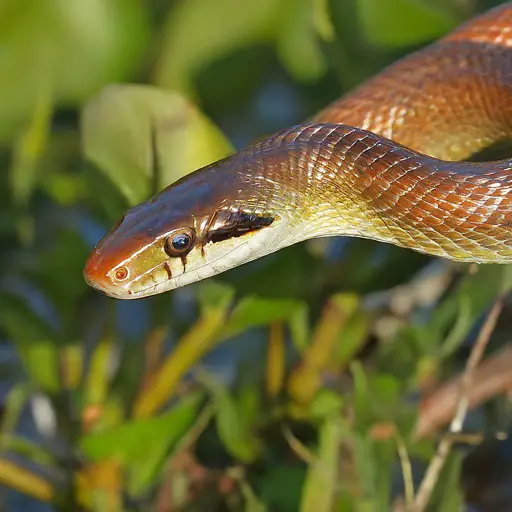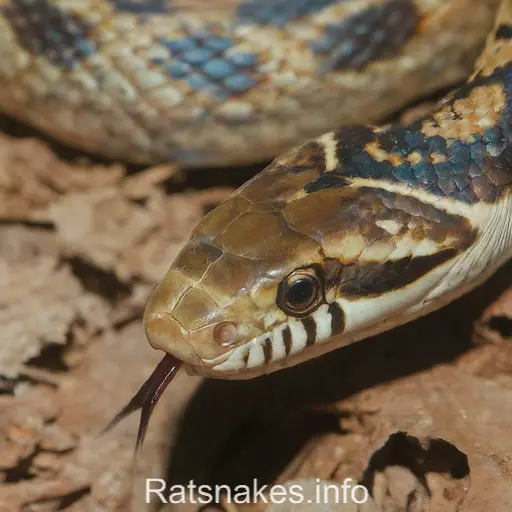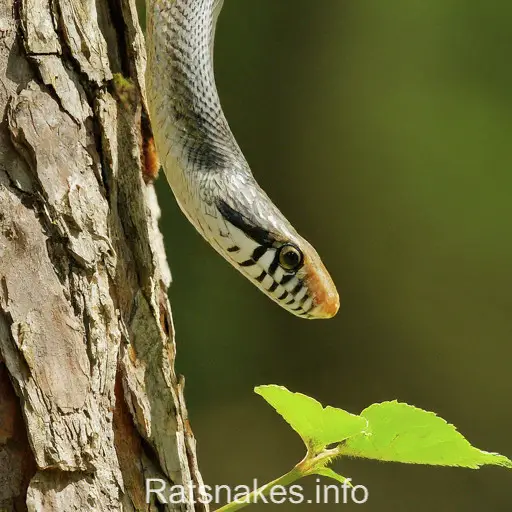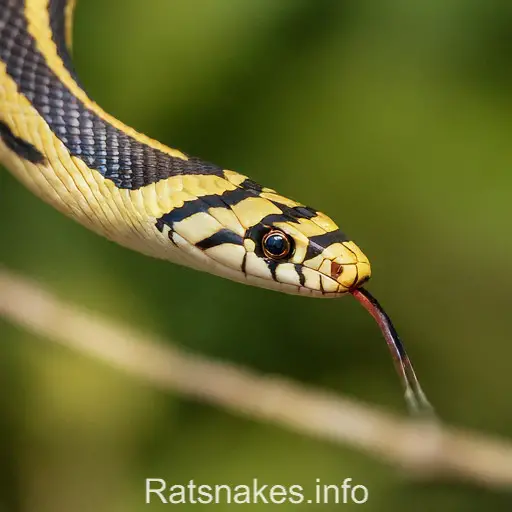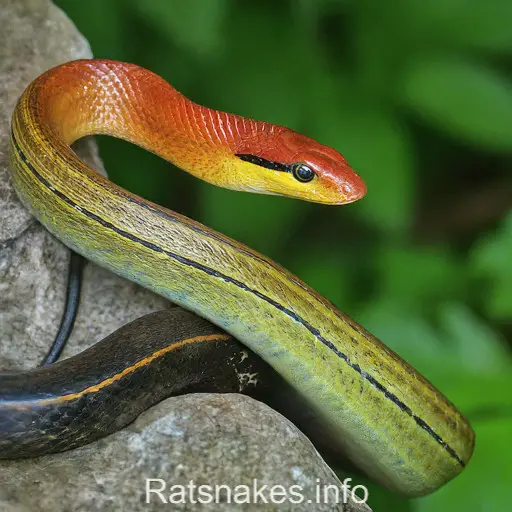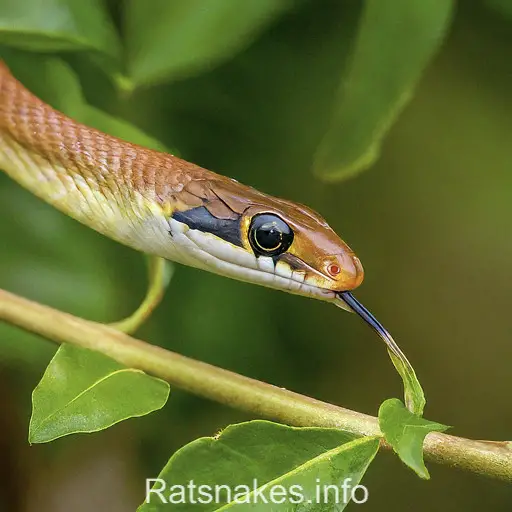
Ptyas mucosa, also known as the Oriental ratsnake, is a fascinating species that captures our curiosity with its sleek appearance and intriguing behavior. Found in various habitats across Asia, this non-venomous snake plays a vital role in maintaining the ecological balance of its environment. As enthusiasts of wildlife and nature, we are drawn to the unique characteristics and adaptive capabilities of Ptyas mucosa.
With its distinctive coloration and impressive size, Ptyas mucosa stands out among its reptilian counterparts. As we delve deeper into the world of this species, we uncover a wealth of information about its diet, habitat preferences, and reproductive habits. Join us on a journey to explore the captivating world of the Oriental ratsnake and gain a newfound appreciation for the wonders of the natural world.
Overview of Ptyas mucosa
Ptyas mucosa, commonly known as the Oriental ratsnake, is a remarkable species that captivates with its distinctive characteristics and behaviors. This non-venomous colubrid snake is widely distributed across various habitats in Asia, showcasing a fascinating blend of features that make it stand out in the wild.
- Coloration: Ptyas mucosa exhibits a striking appearance with its predominantly green or olive-colored scales, often accented with a yellow ventral surface. This color pattern provides effective camouflage in its natural environment, aiding in both hunting and evading potential predators.
- Impressive Size: As one of the larger snake species in Asia, Ptyas mucosa can reach lengths of up to 2.5 meters, making it a formidable presence in its ecological niche. This substantial size contributes to its role as a top predator in the food chain, preying on a variety of smaller animals.
- Dietary Habits: The Oriental ratsnake is a proficient hunter with a diet that primarily consists of rodents, birds, and other small vertebrates. Its agile nature and keen sense of smell enable it to locate and capture prey efficiently, sustaining its energy requirements in the wild.
- Habitat Preferences: Ptyas mucosa shows a remarkable adaptability to different environments, ranging from forests and grasslands to rural areas and even urban settings. This versatility allows the species to thrive in diverse landscapes, showcasing the resilience of nature.
- Reproductive Behaviors: During the breeding season, Oriental ratsnakes engage in courtship rituals that involve intricate displays to attract mates. After mating, females lay eggs in hidden locations, ensuring the safety of their offspring until they hatch and embark on their own journeys in the wild.
We invite you to delve deeper into the world of Ptyas mucosa, appreciating its role in the ecosystem and the intricate dynamics that shape its existence in the wild. Let’s continue this exploration of nature’s wonders as we uncover more about the Oriental ratsnake and its contributions to the biodiversity of Asia.
Habitat of the Oriental ratsnake
When it comes to Ptyas mucosa, adaptability is key. These creatures are highly versatile, thriving in a variety of environments across Asia. Here are some key points about the habitat of the Oriental ratsnake:
- Forests: We often find Oriental ratsnakes in dense forests, where their natural camouflage and exceptional climbing skills help them move stealthily among trees.
- Grasslands: These snakes are equally at home in open grasslands, where they can hunt small mammals, birds, and amphibians with ease.
- Agricultural Areas: Unfortunately, human encroachment on natural habitats has led to Oriental ratsnakes being commonly spotted in agricultural areas, adapting to changes in their environment.
- Urban Settings: Surprisingly, these adaptable creatures have even been found in urban environments, coexisting with humans in cities and towns, showcasing their remarkable ability to adjust to different surroundings.
Understanding the diverse habitats where the Oriental ratsnake dwells is crucial to appreciating the species’ resilience and unique place in the ecosystem.
Diet preferences of Ptyas mucosa
When it comes to diet preferences, Ptyas mucosa showcases a diverse culinary appetite. As opportunistic feeders, these Oriental ratsnakes have been observed consuming a variety of prey in their natural habitats. Their menu includes:
- Rodents: Such as rats and mice.
- Birds: Including eggs and nestlings.
- Amphibians: Like frogs and toads.
- Lizards: Such as geckos and skinks.
These snakes are also known to hunt invertebrates such as insects and other small creatures. The ability of Ptyas mucosa to adapt their diet according to the availability of prey in different environments speaks to their versatility as carnivorous reptiles. The Oriental ratsnake’s efficient hunting skills and broad diet contribute to their success in various ecosystems.
Reproductive habits of the Oriental ratsnake
When it comes to reproduction, the Ptyas mucosa, or Oriental ratsnake, follows a fascinating pattern in the wild. These snakes are oviparous, meaning they lay eggs to reproduce. During the breeding season, which typically occurs in the spring or early summer, male ratsnakes engage in combat to compete for the attention of females. This ritualistic combat involves males intertwining their bodies and attempting to pin down their rival.
Once a female selects a mate, she will lay a clutch of elongated eggs in a hidden nest site. The number of eggs can vary but generally ranges from 5 to 20 eggs per clutch. The female will then diligently coil around the eggs to provide protection and facilitate their incubation. The incubation period lasts for several weeks, after which the hatchlings emerge from their eggs.
Interestingly, Oriental ratsnakes exhibit no parental care beyond egg incubation. The hatchlings are fully independent from birth, equipped with the instinctual knowledge needed to survive in their environment. This reproductive strategy of limited parental care aligns with the snakes’ solitary nature and self-sufficiency in the wild.
Overall, the reproductive habits of the Oriental ratsnake demonstrate an evolutionary adaptation that balances reproductive success with minimal investment in offspring care. These snakes’ ability to reproduce efficiently and ensure the survival of their offspring contributes to their ongoing presence and adaptability in diverse ecosystems.
Conservation efforts for Ptyas mucosa
- Habitat Loss: The Oriental ratsnake, Ptyas mucosa, faces numerous threats due to habitat destruction caused by deforestation, urbanization, and agricultural expansion.
- Human-Wildlife Conflict: Encounters with humans often result in negative outcomes for these snakes, leading to intentional killings out of fear or misunderstanding.
- Illegal Wildlife Trade: Ptyas mucosa is often targeted for the exotic pet trade, adding pressure on wild populations that are already facing challenges.
- Conservation Initiatives: Efforts are underway to protect the habitat of Ptyas mucosa and raise awareness about the importance of these snakes in maintaining ecological balance.
- Community Engagement: Involving local communities in conservation efforts is crucial for ensuring the long-term survival of Ptyas mucosa in the wild.
- Research and Monitoring: Continuous research and monitoring of populations are essential to understand the threats faced by Ptyas mucosa and implement targeted conservation strategies.
| Threats Faced by Ptyas mucosa |
|---|
| Habitat Loss |
| Human-Wildlife Conflict |
| Illegal Wildlife Trade |
| Conservation Strategies for Ptyas mucosa |
|---|
| Habitat protection |
| Awareness campaigns |
| Community involvement |
Key Takeaways
- Ptyas mucosa, commonly known as the Oriental ratsnake, is a non-venomous snake species found across Asia, known for its distinct coloration and impressive size.
- The snakes primarily feed on rodents, birds, and small vertebrates, showcasing their adaptability to various environments.
- Ptyas mucosa exhibits diverse habitat preferences, ranging from forests and grasslands to agricultural areas and even urban settings.
- In terms of reproduction, Oriental ratsnakes lay eggs and exhibit minimal parental care, relying on evolutionary adaptations for offspring survival.
- Conservation efforts for Ptyas mucosa are crucial, focusing on habitat protection, raising awareness, combating human-wildlife conflict, and addressing illegal wildlife trade.
Conclusion
Protecting Ptyas mucosa is vital in combating the conservation challenges it faces. Habitat loss, human-wildlife conflicts, and illegal wildlife trade threaten the existence of these snakes. Through habitat protection, awareness campaigns, and community engagement, we can contribute to their long-term survival. Research and monitoring play a crucial role in understanding and mitigating these threats. By implementing targeted conservation strategies, we can work towards ensuring a sustainable future for Ptyas mucosa. Let’s continue our efforts to safeguard these fascinating creatures for generations to come.

